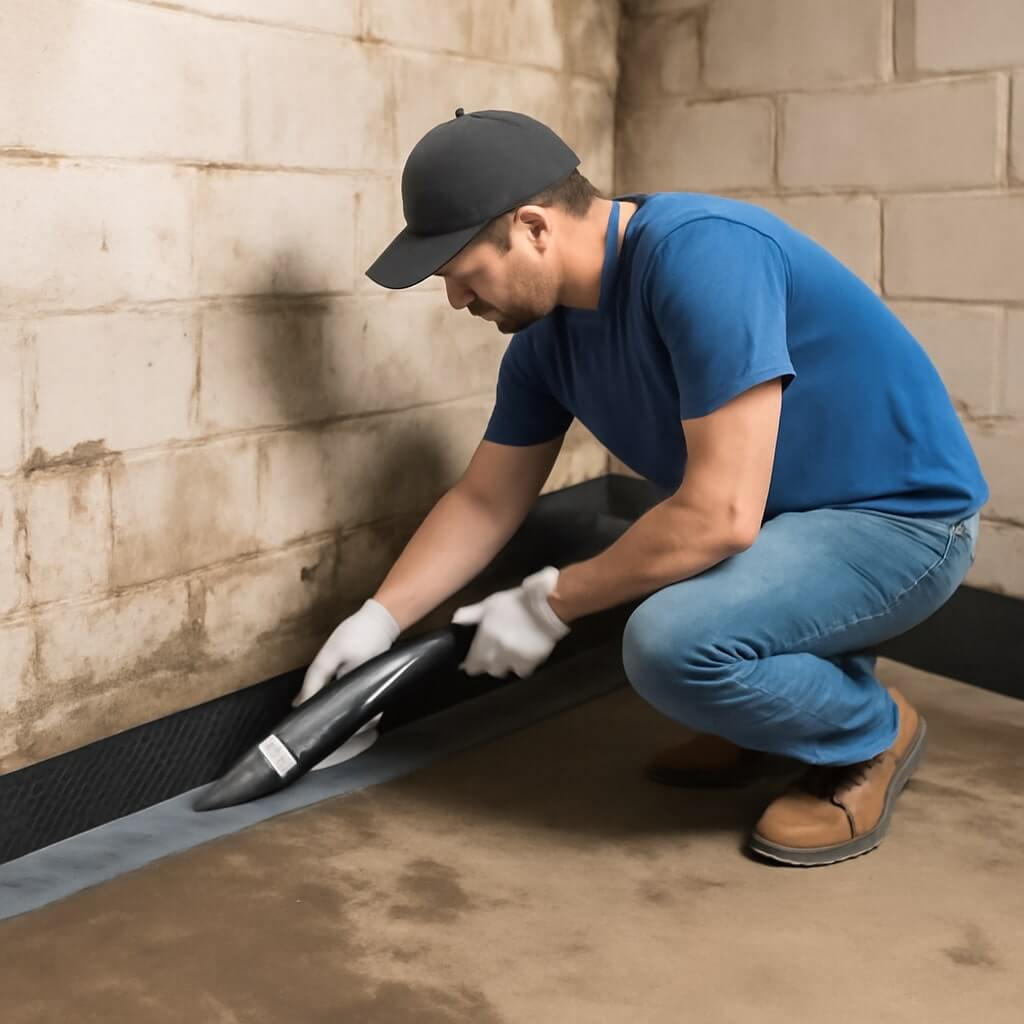Sealing your basement from water intrusion is essential for maintaining a safe and dry environment. You’ll need to understand the common causes of water issues and assess your space for any signs of damage. Implementing effective interior waterproofing methods can greatly reduce the risk of moisture problems. By addressing cracks, installing drainage systems, and using sealants, you can create a robust defense. But what specific techniques should you prioritize for ideal results?
Key Takeaways
- Inspect your basement for cracks and moisture, documenting any findings to prioritize repairs and waterproofing efforts.
- Use hydraulic cement to seal wall cracks, creating a strong barrier against water intrusion.
- Install an interior drainage system to effectively redirect water accumulation away from your foundation.
- Utilize dehumidifiers to manage humidity levels and prevent mold growth in your basement.
- Regularly maintain and inspect waterproofing systems, ensuring timely repairs and efficient sump pump functionality.
Understanding the Causes of Basement Water Intrusion
Water intrusion in basements often occurs due to a combination of factors, including poor drainage, inadequate waterproofing, and structural issues.
Effective rainwater management is essential; if your gutters and downspouts aren’t directing water away from the foundation, it can pool and seep in.
Additionally, foundation cracks can develop over time, allowing moisture to penetrate your basement.
Regularly inspect your foundation for these cracks and address them promptly.
Assessing Your Basement for Water Damage
Before you can effectively seal your basement from water intrusion, it’s essential to assess the space for any existing water damage.
Start with a thorough basement inspection to identify visible signs, such as stains, mold, or peeling paint. Pay close attention to corners, windows, and any cracks in the walls or floor.
Next, conduct a moisture evaluation using a moisture meter to detect hidden dampness. High readings indicate areas needing immediate attention.
Document your findings to prioritize repairs and waterproofing efforts, ensuring you address all potential entry points for water before implementing any sealing techniques.
Interior Waterproofing Methods to Consider
Having assessed your basement for any signs of water damage, it’s time to explore effective interior waterproofing methods that can prevent future issues.
Start by addressing wall cracks, which can allow water to seep in and increase interior moisture levels. You can use hydraulic cement to fill these gaps, creating a strong barrier.
Additionally, consider installing an interior drainage system to redirect any water accumulation away from your walls.
Finally, a dehumidifier can help manage humidity levels, reducing the chance of mold growth.
Implementing these methods guarantees your basement remains dry and protected from water intrusion.
Applying Sealants and Coatings
When applying sealants and coatings to your basement, it’s essential to choose the right type suited for your specific needs.
Various sealants, such as epoxy and polyurethane, offer different benefits depending on the level of moisture and surface conditions.
Understanding proper application techniques will guarantee maximum effectiveness and long-lasting protection against water intrusion.
Types of Sealants
There are several types of sealants available for protecting your basement from water intrusion, each designed to address specific needs and conditions.
Consider these options:
- Epoxy Sealants: Ideal for concrete surfaces, they create a strong, impermeable barrier against moisture.
- Polyurethane Coatings: Flexible and durable, these coatings adapt to surface movements while sealing against water.
- Acrylic Sealants: Water-based and easy to apply, they provide moderate protection and are suitable for interior walls.
- Silicone Sealants: Excellent for sealing joints and cracks, they offer waterproofing benefits and remain flexible over time.
Choose the right sealant to guarantee effective moisture protection.
Application Techniques
To effectively apply sealants and coatings in your basement, preparation is essential.
Start with thorough surface preparation; clean the walls to remove dirt, dust, and moisture. Use a wire brush or pressure washer for stubborn residues.
Once dry, inspect for cracks and fill them with appropriate sealant.
For application techniques, use a roller or brush for even coverage, ensuring you follow the manufacturer’s instructions.
Apply the sealant in thin layers, allowing each coat to dry before adding another. This method enhances adhesion and effectiveness, ensuring a durable barrier against water intrusion.
Consistency is key to achieving ideal results.
Installing Interior Drainage Systems
A reliable interior drainage system is essential for preventing water intrusion in your basement.
To guarantee effective drainage system design and successful sump pump installation, follow these steps:
- Assess your basement layout to determine the best drainage points.
- Excavate the perimeter of your basement floor to create a trench for the drainage system.
- Install drainage pipes in the trench, ensuring they slope towards the sump pump for ideal flow.
- Connect the sump pump, ensuring it’s properly wired and positioned to remove water efficiently.
Maintaining Your Waterproofing Solutions
While installing effective waterproofing solutions is vital, maintaining them is equally important to confirm long-term protection against water intrusion.
Conduct regular inspections of your waterproofing systems to identify any signs of wear or damage. Check for cracks, mold, or moisture, and address these issues promptly.
Regularly inspect your waterproofing systems for cracks, mold, or moisture to ensure prompt repairs and long-lasting protection.
Seasonal maintenance is essential; make sure that gutters and downspouts are clear of debris to prevent water buildup near your foundation.
Additionally, monitor your sump pump’s functionality and battery life.
Conclusion
By implementing these interior waterproofing techniques, you can effectively seal your basement against water intrusion. Address cracks with hydraulic cement, install a reliable drainage system, and maintain ideal humidity levels with dehumidifiers. Regular inspections will guarantee your waterproofing methods remain intact and functional. With these thorough strategies in place, you’ll greatly reduce the risk of water damage, protecting your basement and enhancing the overall integrity of your home. Stay proactive to keep your space dry and secure.

